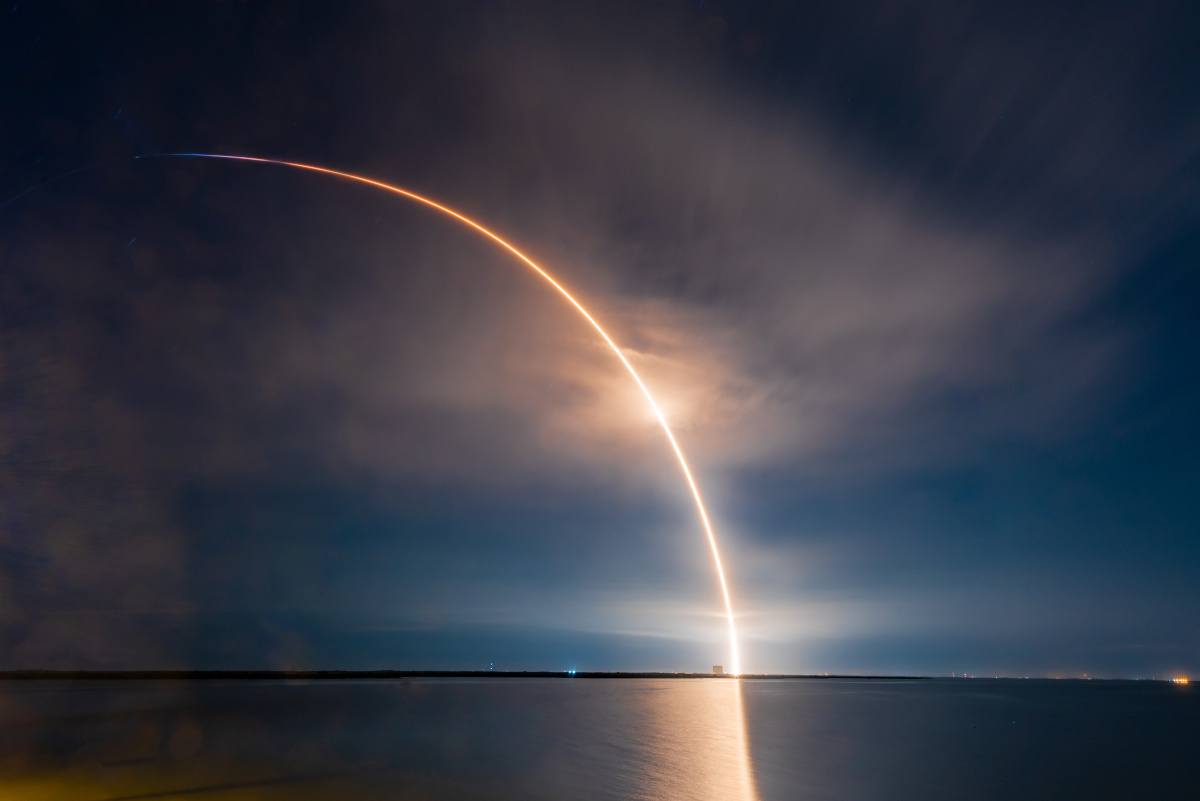
With little competition in sight other than Amazon’s fledgling Project Kuiper, Elon Musk’s Starlink is dominating space – but its reputation isn’t stellar.
About a year ago, when the human population hit the 8bn milestone for the first time, people were talking about how the world is getting more crowded. But another part of our human world that is getting increasingly crowded, and one that we don’t think about often enough, is space.
Over the weekend, SpaceX launched dozens of satellites into space – more specifically, the lower-Earth orbit – as part of its Starlink constellation that aims to bring high-speed internet to all corners of the globe. This brings the total number of Starlink satellites in orbit to nearly 5,000.
Hurtled into lower-Earth orbit aboard the powerful Falcon 9, a class of rockets that also helps national space agencies launch their own missions, the 44 Starlink satellites add to Musk’s rapidly growing presence in the space sector – with no worthy competitor in sight.
— SpaceX (@SpaceX) October 22, 2023
Even though the idea of making high-speed internet more accessible even in the most remote parts of the world seems noble, there are many concerns around how quickly Starlink is taking over the skies. For one, sudden bright lights beaming across the night sky has been confusing many.
But less innocuous consequences of Starlink’s ubiquitous presence above the clouds are increased chances of collisions, interference with other scientific missions, the dangers of satellite’s re-entering the Earth’s atmosphere and the growing incidents of space debris.
More than 50pc of all active satellites are Starlink
In July, for instance, an international study found that SpaceX’s Starlink satellites are emanating “unintended electromagnetic radiation” that has a detrimental effect on the field of radio astronomy. Lead author Federico Di Vruno said that while astronomers have previously theorised about this kind of radiation, latest observations “confirm it is measurable”.
“This study represents the latest effort to better understand satellite constellations’ impact on radio astronomy,” said Di Vruno, co-director of the International Astronomical Union’s Centre for the Protection of the Dark and Quiet Sky from Satellite Constellation Interference.
Electromagnetic radiation is different from communications transmissions, which had been the primary focus for radio astronomers so far because of their ability to outshine astrophysical sources. Now, new non-communication sources add further complexity to the issue.
But some of the problems associated with Starlink’s dominance are closer to home. A little more than a year ago, when Ukrainian officials sent Musk an emergency request to activate SpaceX services to Sevastopol, a Crimean port where Ukrainian forces planned a surprise attack, Musk refused under the pretext that he was concerned about a potential nuclear response from Russia.
The plan had to then be aborted. While Musk is well within his rights to refuse requests such as this as the owner of a private enterprise, this example raises concerns around the implications of the power one person can yield with repercussions in geopolitics.
Then there are the reports about Starlink services being used by illegal miners in Brazil’s Amazon rainforest for coordinating logistics, alerting each other before police raids and making payments remotely.
And even though some major powers, such as China and Russia, are not connected to Starlink because of national security concerns, the so-called megaconstellation being instituted by SpaceX is a force to be reckoned with – accounting for more than 50pc of all active satellites according to a recent New York Times report.
A different Amazon problem
Competition to Starlink is negligible, but on its way. Earlier this month, the world’s third richest man Jeff Bezos (Musk is the richest) launched the first-ever satellites as part of Amazon’s Project Kuiper to take on SpaceX’s Starlink.
KuiperSat-1 and KuiperSat-2 are the first of more than 3,200 satellites that are to be manufactured and launched as part of Project Kuiper over the next six years. The so-called ‘protoflight’ mission will put to the test years of research and development.
“We’ve done extensive testing here in our lab and have a high degree of confidence in our satellite design, but there’s no substitute for on-orbit testing,” said Rajeev Badyal, Project Kuiper’s vice-president of technology. “This is Amazon’s first time putting satellites into space, and we’re going to learn an incredible amount regardless of how the mission unfolds.”
Launched in 2019 as a project to take on SpaceX in the high-speed satellite internet space, Project Kuiper is the brainchild of Bezos, Amazon’s founder and CEO, who is fascinated by space travel and has founded his own aerospace company called Blue Origin.
But with only two satellites currently in space, Amazon may be 500km above the Earth but the e-commerce giant still has miles to go before it can catch up to the nearly 5,000 Starlink satellites beaming high-speed internet down to a customer base of more than 2m – and growing.
10 things you need to know direct to your inbox every weekday. Sign up for the Daily Brief, Silicon Republic’s digest of essential sci-tech news.

